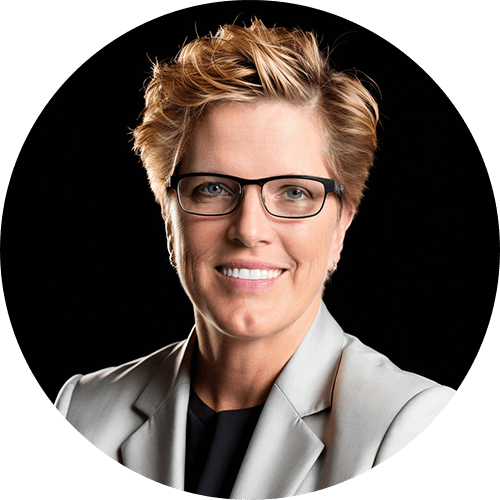Mastering Contact Center Workforce Optimization: 4 Strategies for Success
Contact center workforce optimization is an increasingly common topic of discussion. With a rise in customer expectations, paired with shifting expectations around the employee experience, there has never been a better time for organizations to discuss optimizing their workforce, as well as the use of contact center workforce optimization software in tools. In this article, we’ll dive into a basics around this subject, different strategies, challenges and best practices, and key takeaways.
What is Contact Center Workforce Optimization?
Contact center workforce optimization is a consolidated environment of technology, strategies, and processes to maximize agent efficiency, productivity, and quality to enable the contact center to perform at the highest level. Key components of workforce optimization in a contact center include:
- Workforce management which serves as a forecasting call volume and scheduling agent shifts accordingly, as well as managing breaks and overtime.
- Training sessions enable better agent-customer interactions. In addition to corporate training sessions and training-related communications, implementing microlearning can help agents better retain their knowledge with bite-sized learning modules, knowledge checks, and quizzes.
- Quality management ensures that agents are providing high-quality service and helps to identify areas where agents can improve their performance for better customer satisfaction.
- Performance dashboards provide real-time performance feedback for agents and supervisors. These can help motivate agents to achieve goals and identify where agents can improve.
- Coaching sessions help agents improve their skills, stay updated with product and service knowledge, and enhance overall agent performance. These sessions also give managers an idea of where additional training is needed, and to gauge agent well-being.
- Gamification incorporates game elements into non-game contexts, such as a contact center. Gamification ties into incentive management, using leaderboards, levels, badges, points, rewards and recognition, and more to motivate agents and increase engagement. This improves overall performance – which ultimately helps boost the customer experience.
Contact center workforce optimization should also include agent training and engagement and implementing the right technology to support these initiatives.

Benefits of Workforce Optimization in Contact Centers
Workforce optimization in contact centers is worth the investment, as it brings many benefits, which include (but are not limited to):
- Increased customer satisfaction The more efficiently contact center agents can address customer inquiries, and the more helpful the resolution, the higher the customer satisfaction.
- Improved agent productivity Providing agents with the right training, tools, and resources enables contact centers to improve agent performance and productivity.
- Enhanced employee engagement Contact centers can enhance engagement (and better retain their workforce) by giving agents meaningful feedback, regular coaching, opportunities for learning and development, and clear paths for career growth.
- Reduced costs Contact centers can reduce costs through improved data and analytics collection, fostering a productive environment, and investing in the right contact center workforce optimization software and tools.
How does contact center workforce optimization work?
Contact center workforce optimization brings elements together to create an optimized workflow. Data collection is the first step, which includes factors such as call volume, call patterns, and areas of agent improvement.
Management is another crucial element to contact center workforce optimization. This includes ensuring that agents are well-trained and compliant with procedures and any regulatory requirements. Truly effective management also involves regular coaching with meaningful conversations, both scheduled and in time of need. Contact center managers are increasingly including well-being as part of these conversations.
Finally, performance feedback for agents is crucial for improvement and meeting goals. This can be done through methods such as optimized quality assurance processes, dashboards, and gamification.
Strategies and best practices for contact center workforce optimization
Contact center workforce optimization can be highly successful by following a few core strategies.
Strategy 1: The ultimate goal and focus on customer satisfaction. Evaluate all components across the contact center for optimization, including quality assurance process, training practices, coaching quality, etc., and determine what can be optimized.
Strategy 2: Remember that the customer experience starts with the employee experience. By providing a robust onboarding experience agents well contact centers can reduce customer wait times, and improve the quality of interactions – and the overall customer experience.
Strategy 3: Empower your agents. Agents are the first line of customer contact, and it’s critical to give them ownership of their work. Provide them with the right training, tools, and resources, as well as the authority to resolve customer issues.
Strategy 4: Evaluate technological solutions – and make that investment. These solutions offer agent training, performance insights, automated manager insights, and voice of employee. Also look for a gamified approach. By tying gamification to goals, contact centers can greatly boost agent motivation and engagement, and increase focus on their performance. Part of gamification should involve a social element, where agents can collaborate, and share tips and best practices.
Strategy 5: Measure and track progress. Evaluate the impact of contact workforce optimization initiatives so that you can track success and make necessary adjustments. Include metrics such as customer satisfaction, agent productivity, and cost savings.

Challenges and Best Practices in Contact Center Workforce Optimization
While contact center workforce optimization is an essential component for organizational success, there are a few challenges. For instance, workforce optimization often requires a significant data collection and analysis. This can be a challenge, especially for contact centers that are not equipped to collect and analyze volumes of data. One best practice is to leverage contact center workforce optimization software and tools. Additionally, don’t just focus on a small set of metrics. Evaluate all areas of the employee and customer experience to get a full picture of what is working and what can be better, adding the “eye-openers” to the analysis list.
Another challenge is the adoption of contact center workforce optimization tools and software. This requires a robust change management campaign, because workforce optimization changes the way that agents work and the way they view their work. Start communications early, with training and coaching sessions as part of the ramp-up. Once implemented, offer additional coaching and training to any slow adopters. One idea to motivate slow adopters is to present a leaderboard of those who have been using the new tool and showcase the progress.
The Future of Contact Center Workforce Optimization
There are many emerging trends that are shaping the future of contact center workforce optimization, including:
A digital uptick
Customers increasingly prefer to interact via digital channels rather than just through calls. Contact centers must adapt their optimization tools and strategies to offer and accommodate digital channels, such as chatbots and virtual assistants to handle customer inquiries.
A rise in artificial intelligence (AI)
Contact centers are already leveraging AI to improve organizational efficiency and productivity by automating routine and mundane tasks, such as routing calls and digital inquiries, and providing low-lift customer support. As generative AI tech evolves, there will likely be many additional opportunities as part of contact center workforce optimization initiatives.
Customer expectations
Today’s customers have many options and will switch loyalties. Therefore, a greater emphasis is being placed on the customer experience. For contact centers to provide a high-quality customer experience, they must evaluate and optimize their workforce optimization tools and strategies.
Increasing focus on data
As contact centers collect more data about customer behavior and agent performance, these findings will lead to improved efficiency, productivity, and customer satisfaction.
Greater automation
AI and other technologies will be used to automate more tasks in contact centers, freeing up agents to focus on more complex and challenging inquiries. This will lead to improved efficiency and productivity.
A more personal touch
Contact centers will use data to personalize the customer experience, providing customers with the information and support they need in the way that they prefer. This will lead to improved customer satisfaction.
Meet Centrical — #1 Performance Management Gamification Platform
The customer experience starts with the employee experience. Centrical’s Performance eXperience platform goes beyond performance management and takes a robust and gamified approach to contact center workforce optimization by offering a number of elements, including AI-powered microlearning to help agents retain training knowledge and fight the “forgetting curve” augmented coaching, real-time performance insights, and voice of the employee.
As part of contact center workforce optimization, the ability to create training materials quickly is important. Contact centers may also want to evaluate their quality assurance processes and any optimization opportunities. The Centrical platform can assist with both, offering the fast, scalable creation of frontline training materials by leveraging AI, and tools to optimize quality assurance processes, including flexible forms and transparent performance insights.
Centrical customers experience the following:
- 12% increase in productivity
- 30% decrease in attrition rates
- 15% increase in CSAT and FCR scores
- 50% faster onboarding
- 53% less time authoring learning content

Watch the Centrical platform in action with a quick preview.
Summary and Key Takeaways
We’ve just covered a general overview of what contact center workforce optimization is, how it works, effective strategies, and what the future might look like. Below are a few key takeaways:
- Optimizing the contact center workforce can be done by including elements such as improved technology, simplified and robust quality assurance processes, empowering agents through training and effective management, and gamification.
- Benefits of optimizing the call center workforce include a more efficient and higher-performing workforce, reduced operating cost, and increased customer satisfaction and related scores (e.g., CSAT and NPS).
- Predictions for the future of contact center workforce optimization include greater personalization, more automation (especially by leveraging AI), and an increase in data-driven actions to better meet the rise in customer expectations.
For over a decade, Centrical has partnered with leading contact centers around the globe to optimize frontline teams and boost the customer experience by taking a holistic, gamified approach to the employee experience. Ready to change the game at your organization? Watch the Centrical platform in action with a quick preview, and request your personalized overview today.
Engage and motivate your frontline teams
Improve performance with an AI-powered digital coach
Deliver world class CX with dynamic, actionable quality evaluations
Boost performance with personalized, actionable goals
Nurture employee success with the power of AI
Listen and respond to your frontline, continuously
Drive productivity with performance-driven learning that sticks
Drive agent efficiency, deliver client results
Keep tech teams motivated and proficient on products and services while exceeding targets
Maintain compliance while building customer happiness and loyalty
Enlighten energy teams to boost engagement
Engage, develop, and retain your agents while driving better CX
Improve the employee experience for your reservations and service desk agents










 Madeleine Freind
Madeleine Freind
 Natalie Roth
Natalie Roth Linat Mart
Linat Mart












 Doron Neumann
Doron Neumann Gal Rimon
Gal Rimon Daphne Saragosti
Daphne Saragosti Ella Davidson
Ella Davidson Ariel Herman
Ariel Herman Ronen Botzer
Ronen Botzer